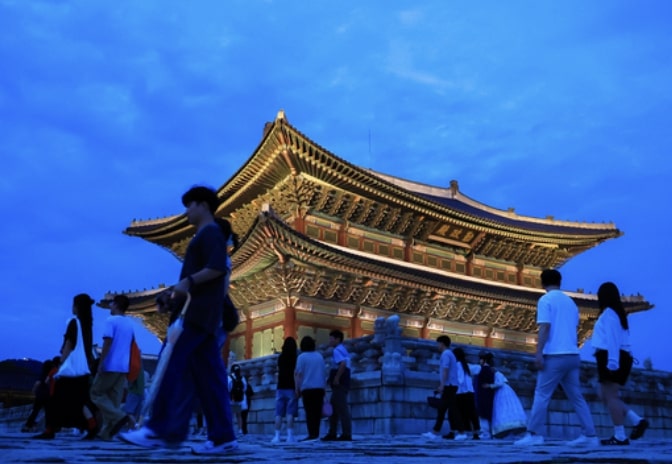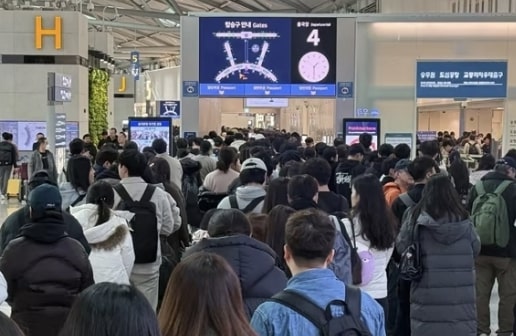
10 Serene Temples in Korea Worth Visiting

Many Korean temples are nestled in mountains or surrounded by beautiful nature, creating a peaceful space where spirituality and nature come together. Traveling to these temples across the country lets you experience Korea’s unique beauty. With colorful dancheong patterns decorating the buildings—bright yet perfectly balanced with the natural surroundings—you’ll find a special harmony of tradition and nature.
1. Songgwangsa Temple 《송광사》
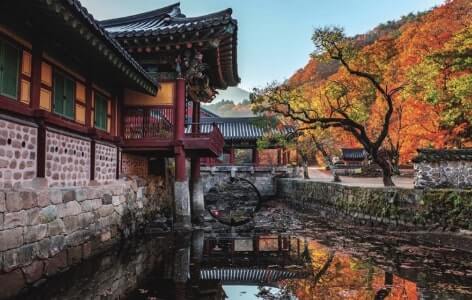
📍100, Songgwangsaan-gil, Songgwang-myeon, Suncheon-si, Jeollanam-do
Nestled in the foothills of the Sobaek Mountain Range, Songgwangsa Temple is revered as one of Korea’s Three Jewel Temples, along with Haeinsa and Tongdosa. Renowned for its focus on Zen meditation and strict monastic discipline, it has produced many eminent monks over the centuries. The tranquil pond at the entrance, the graceful arched bridge, and the Seungseon Bridge spanning the valley blend seamlessly with the natural surroundings—inviting visitors to feel as though they’ve stepped into another world.
2. Hwaeomsa Temple 《화엄사》
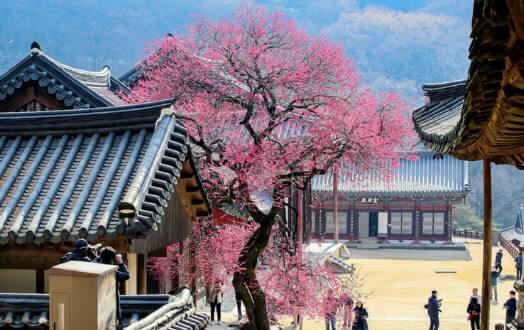
📍539, Hwaeomsa-ro, Gurye-gun, Jeollanam-do
Hwaeomsa Temple, founded during the Unified Silla period, is a site of profound historical and cultural significance. Its Gakhwangjeon Hall, designated as a National Treasure, and the largest stone lantern in Korea stand in majestic grandeur. A particularly unique highlight is the temple’s natural monument plum tree, which astonishingly blooms and sheds its flowers more than 300 times a year. In spring, it transforms the temple grounds into an enchanting, otherworldly landscape.
3. Mangyeongsa Temple 《만경사》
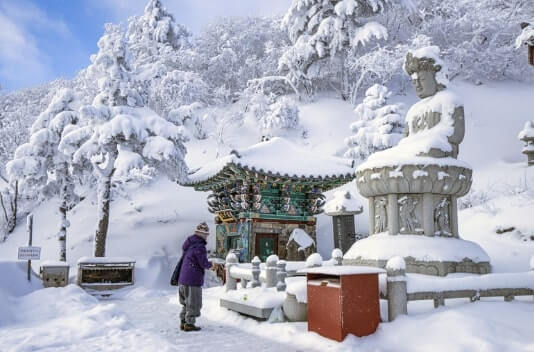
📍4246-168, Taebaeksan-ro, Taebaek-si, Gangwon-do
Perched at an altitude of 1,470 meters, Mangyeongsa Temple is the highest temple in Korea—truly a place where earth meets sky. From here, it’s just a 10-minute walk to the summit of Mt. Taebaeksan. With the nearby Cheondang Altar, where ancient prayers are offered to the heavens, and panoramic views of snow-covered peaks, the temple attracts visitors year-round seeking both beauty and spiritual connection.
4. Bulyeongsa Temple 《불영사》
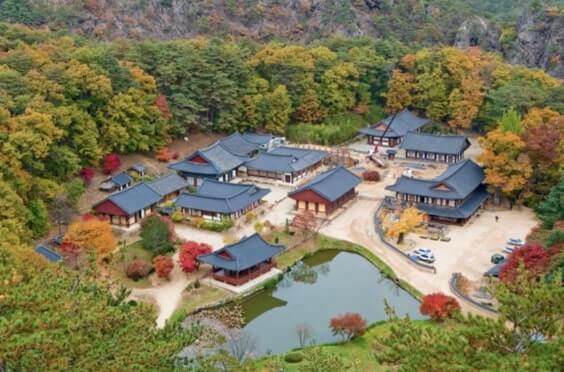
📍48, Buryeongsa-gil, Uljin-gun, Gyeongsangbuk-do
A temple named after a legend where the Buddha’s reflection once appeared on the surface of a pond. Nestled on the slopes of Cheonchuksan Mountain, Bulyoungsa’s walking trail offers a tranquil atmosphere with its dense forests and clear streams—an ideal setting for quiet contemplation.
5. Tapsa Temple 《마이산 탑사》
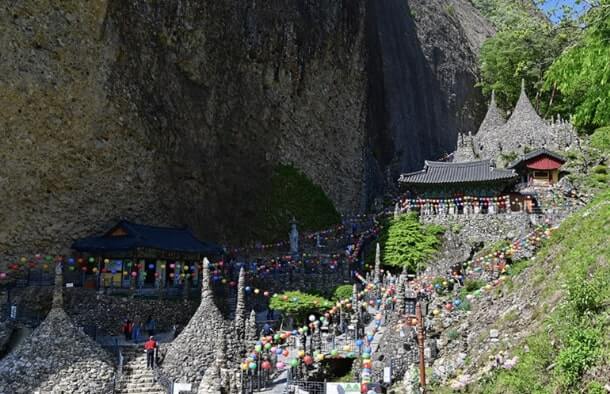
📍367, Maisannam-ro, Maryeong-myeon, Jinan-gun, Jeollabuk-do
Maisan Tapsa, built by the hermit Lee Gap-ryong who envisioned a harmonious world blending Confucianism, Buddhism, and Taoism, is renowned for its over 80 stone pagodas that remarkably withstand even the strongest typhoon winds, attracting countless visitors who come to pray and make wishes atop Maisan Mountain.
6. Hyangiram 《향일암》
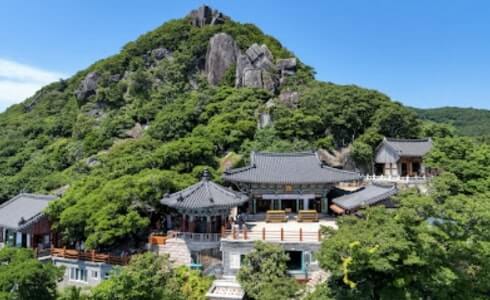
📍60, Hyangiram-ro, Dolsan-eup, Yeosu-si, Jeollanam-do
Hyangiram, a Silla-Era Temple Facing the Sea Often referred to as a temple facing the sea, Hyangiram was originally founded by the renowned Silla monk Wonhyo. It was later fully developed into a temple in 1715 during the Joseon Dynasty. The surrounding rock formations resemble a turtle’s shell, giving it the nickname Yeongguam (Rock of Eternity). The view of the sunrise from this spot is nothing short of spectacular.
7. Buseoksa Temple 《부석사》
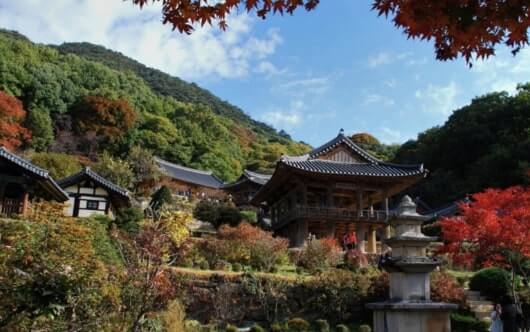
📍345 Buseoksa-ro, Buseok-myeon, Yeongju-si, Gyeongsangbuk-do
Buseoksa Temple, recognized by UNESCO for its timeless value, is celebrated as a model of traditional Korean architecture, thoughtfully designed according to Buddhist principles, and is home to Muryangsujeon—the oldest wooden building in Korea—and the Josadang Hall mural, one of the most important paintings from the Goryeo Dynasty.
8. Saseongam 《사성암》
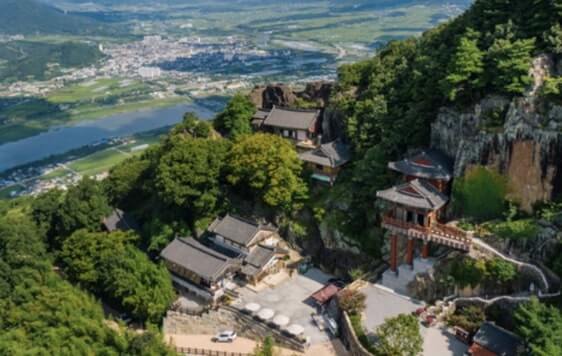
📍303 Saseongam-gil, Muncheok-myeon, Gurye-gun, Jeollanam-do
Saseongam, A Cliffside Temple Overlooking the Seomjin River. Perched dramatically atop a sheer cliff, Saseongam Temple offers sweeping views of the Seomjin River and the picturesque Gurye region. Especially on autumn mornings, when a sea of clouds rolls in, the temple appears to float above the heavens—creating a truly mystical and otherworldly experience.
9. Daejeonsa Temple 《대전사》
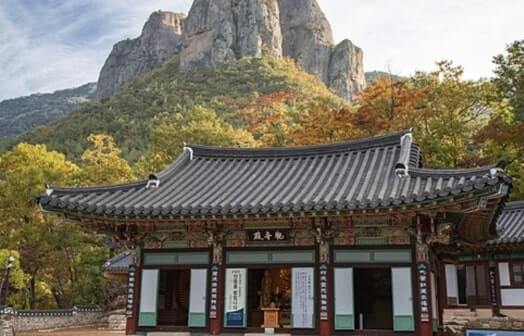
📍226, Gongwon-gil, Cheongsong-gun, Gyeongsangbuk-do
Daejeonsa Temple, nestled beneath the dramatic Flag Rock of Juwangsan, offers breathtaking views that, especially in the misty early mornings or after rain, create a serene and mystical atmosphere, and although its scale has diminished due to several devastating fires, its enduring spiritual presence remains strong.
10. Seonamsa Temple 《선암사》
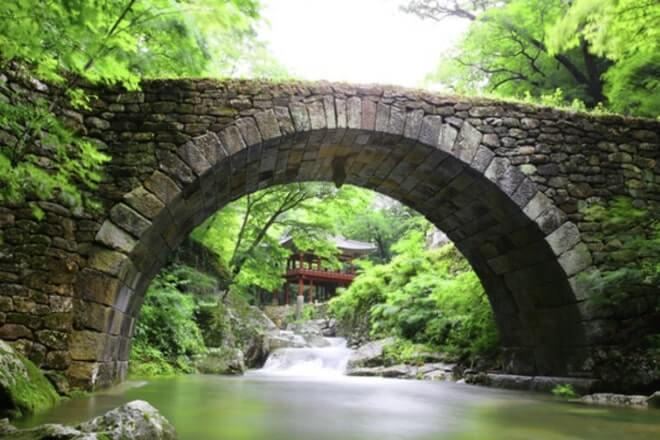
📍450, Seonamsa-gil, Suncheon-si, Jeollanam-do
Seonamsa Temple, a UNESCO World Cultural Heritage site, is a place of spiritual tranquility nestled in the mountains. It is also the birthplace of renowned novelist Jo Jung-rae, author of Taebaek Mountains, Jungle Man-ri, and Arirang. Visitors can take a slow stroll across Seungseon Bridge, accompanied by the soothing sound of the valley stream, and fully immerse themselves in the temple’s peaceful, natural surroundings.
—
UoH offers a personal assistant program with two types of services. For traveling in Korea, we assist with any type of reservations, rentals, and personal assistance. For shopping, we purchase anything you need and ship it to your home. Feel free to email us at uofhorang@gmail.com for a quote and to find out how to proceed!


